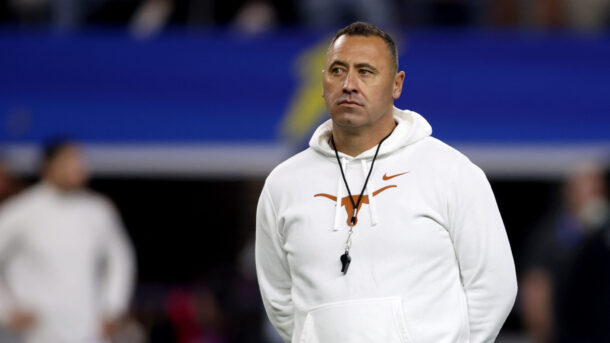Ad Disclosure
March Madness: NCAA Men’s Tournament
By Chris Wright
Last Updated:
March Madness is here.
UConn has won back-to-back NCAA Tournaments and is trying to become the first program to win at least 3 consecutive national championships since John Wooden’s UCLA dynasty won the NCAA Tournament 7 consecutive times from 1967-73.
Here’s our FAQ to explain everything that matters about March Madness:
- March Madness Odds
- March Madness winners
- Final Four odds
- March Madness Most Outstanding Player
- March Madness All-Tournament teams
- Buzzer-beaters and biggest shots in March Madness history
- Biggest upsets in March Madness history
- Best champions in March Madness history
- Worst champions in March Madness history
How Many Teams Are in March Madness?
There are 68 teams in the initial NCAA Tournament bracket — but 8 of those teams have to win an opening game to move into the 64-team bracket.
When Is Selection Sunday?
Selection Sunday for the 2025 NCAA Tournament is March 16. The March Madness bracket will be revealed at 6 pm (ET) on CBS.
What Are the Key Dates for March Madness?
March 16: Selection Sunday
March 18-19: First Four games
March 20-21: First Round games
March 22-23: Second Round games (winners advance to Sweet 16)
March 26-27: Sweet 16 games
March 28-29: Elite 8 games (winners advance to Final Four)
April 5: Final Four semifinals in San Antonio
April 7: Championship game in San Antonio
Where Are the First-Round Sites in 2025?
These 8 cities will host first- and second-round NCAA Tournament games in 2025:
- Lexington, Kentucky (March 20, 22)
- Providence, Rhode Island (March 20, 22)
- Seattle, Washington (March 21, 23)
- Wichita, Kansas (March 20, 22)
- Cleveland, Ohio (March 21, 23)
- Denver, Colorado (March 20, 22)
- Milwaukee, Wisconsin (March 21, 23)
- Raleigh, North Carolina (March 21, 23)
Where Are the Sweet 16/Elite 8 Region Sites in 2025?
East Region: Newark, New Jersey (March 27-29)
West Region: San Francisco, California (March 27-29)
South Region: Atlanta, Georgia (March 28-30)
Midwest Region: Indianapolis, Indiana (March 28-30)
Where Is the 2025 Final Four?
San Antonio is the host city for the 2025 Final Four (April 5, 7).
The next 6 years also have been assigned:
- 2026: Indianapolis (April 4, 6)
- 2027: Detroit (April 3, 5)
- 2028: Las Vegas (April 1, 3)
- 2029: Indianapolis (March 31, April 2)
- 2030: Dallas (April 6, 8)
- 2031: Atlanta (April 5, 7)
How Are Teams Selected for March Madness?
There are two ways to qualify for the NCAA Tournament: automatic bid and at-large bid.
Automatic bids are given to each team that wins its conference tournament. The Selection Committee then gives at-large bids to the most deserving teams that didn’t win their conference tournament.
There are 31 automatic bids (conference champions) and 37 at-large bids.
How Are Seeds Assigned for March Madness?
The Selection Committee ranks teams No. 1 through No. 68 and then assigns those teams to 1 of the 4 Regions. All 4 Regions then have 16 teams, seeded 1 through 16.
Seeding is not scientific. There is no set formula. The Selection Committee seeds teams based on multiple factors, including overall record, strength of schedule, NET (a formula-based evaluation and ranking) and plenty of analysis.
The top team is assigned to a Region that makes the most geographical sense.
UConn, for instance, was the No. 1 overall seed in 2024 and assigned to the East Region. But it’s impossible to guarantee that all 4 No. 1 seeds are put in their preferred Region. Because travel is a concern, the Selection Committee considers geography when assigning teams to first-round sites. Therefore, the cities that host first- and second-round games often have games involving 2 different Regions but featuring teams that are closer.
In 2024, for example, North Carolina earned a No. 1 seed in the West Region but played its first- and second-round games closer to home in Charlotte, NC, instead of Denver or Sacramento.
Lower-seeded teams can expect to travel, even for the first- and second-round.
Last season, NC State received a No. 11 seed in the South Region, but had to travel to Pittsburgh for opening weekend. The Wolfpack made it to the Final Four. Alabama, a No. 4 seed in the West Region, had to travel to Spokane, Washington, for its first- and second-round games. The Tide also made the Final Four.
How Does the March Madness Bracket Work?
March Madness is a single-elimination tournament. All 4 Regions have 16 teams that play a mini-tournament and follow the same first-round formula:
- Game 1: No. 1 seed vs. No. 16 seed
- Game 2: No. 8 seed vs. No. 9 seed
- Game 3: No. 5 seed vs. No. 12 seed
- Game 4: No. 4 seed vs. No. 13 seed
- Game 5: No. 6 seed vs. No. 11 seed
- Game 6: No. 3 seed vs. No. 14 seed
- Game 7: No. 7 seed vs. No. 10 seed
- Game 8: No. 2 seed vs. No. 15 seed
Winners advance to the second round, but the format remains the same:
- Game 9: Winner Game 1 vs. Winner Game 2
- Game 10: Winner Game 3 vs. Winner Game 4
- Game 11: Winner Game 5 vs. Winner Game 6
- Game 12: Winner Game 7 vs. Winner Game 8.
Those winners advance to the Sweet 16. Again, the format doesn’t change:
- Game 13: Winner Game 9 vs. Winner Game 10
- Game 14: Winner Game 11 vs. Winner Game 12.
Those 2 winners advance to the Elite 8:
- Game 15: Winner Game 13 vs. Game 14 winner.
That winner advances to the Final Four, along with the other 3 Regional winners.
The Final Four Bracket
Each year, the Selection Committee decides which Regions will square off in the Final Four semifinals.
In 2025, the South Region winner will play the West Region winner in one semifinal, and the Midwest Region winner will play the East Region winner in the other semifinal.
In 2024, the Final Four pairings were: East vs. West; Midwest vs. South.
In 2023, the Final Four pairings were: South vs. East; Midwest vs. West.
In 2021 and 2022, the Final Four pairings were: West vs. East; South vs. Midwest.
Managing Editor
A 30-time APSE award-winning editor with previous stints at the Miami Herald, The Indianapolis Star and News & Observer, Executive Editor Chris Wright oversees editorial operations for Saturday Down South.



